PLANT HISTORY
1906 to Present Day
PLANT HISTORY (1906 TO PRESENT DAY)
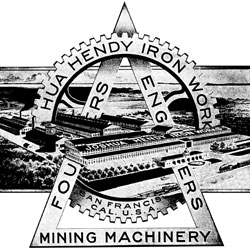 Early Hendy Iron Works Logo
Early Hendy Iron Works Logo
The Joshua Hendy Iron Works was founded by a British immigrant, Joshua Hendy, who became one of California’s most successful nineteenth century industrialists and established a company that continued through the twentieth century, into the twenty-first century and is as vibrant today as ever. See the brief biography section above about Joshua Hendy for early information.
Declared a National Landmark in 1978, The Northrop Grumman Corporation, Marine Systems facility in Sunnyvale, California now occupies the historic site of the Joshua Hendy Iron Works, carrying on a tradition of manufacturing unsurpassed in its large-scale and duration by any other West Coast firm. This is a summarized story of that tradition, the man who began it, the products developed and the men and women who have continued it to the present day.
After Joshua Hendy’s death, his two nephews, Samuel and John Hendy, took over the management. They ran the corporation from 1891 until 1906, when the mill was destroyed in the Great San Francisco Earthquake and Fire of April 18th, 1906, at which time John Hendy took over management and with the Board of Directors, ultimately decided to move the manufacturing plant to Sunnyvale, California while keeping the sales office in San Francisco. The name was changed from the Hendy Machine Works to the Hendy Iron Works and reincorporated, when the plant was rebuilt in Sunnyvale starting in October 1906. The first phases of construction were completed in 1907 through 1910.
The business continued with all of its core businesses (from above) in Sunnyvale and also added large scale water control, irrigation control, ship building equipment, equipment for power projects and several other lines to its products.
During World War I, merchant marine and military equipment, especially the large triple-expansion steam engines for ocean-faring ship propulsion, marine valves, fittings and deck machinery were added to the product lines.
Post WW I, product lines were expanded into more agricultural equipment, including pumps and tractors.
Hendy played a major role during World War II, quadrupling its size, employing up to 11,500 employees and producing almost one third of the Liberty Ship propulsion engines for those ships built by the U.S. during WWII. Electrical generation, boilers, turbine drives, gear drives, propeller shafts for ships were added during WW II as well as torpedo launchers, rocket launchers, battleship shell casings and a large variety of other equipment items. The Hendy Iron Works won many honors during and after WW II for its support of the war effort.
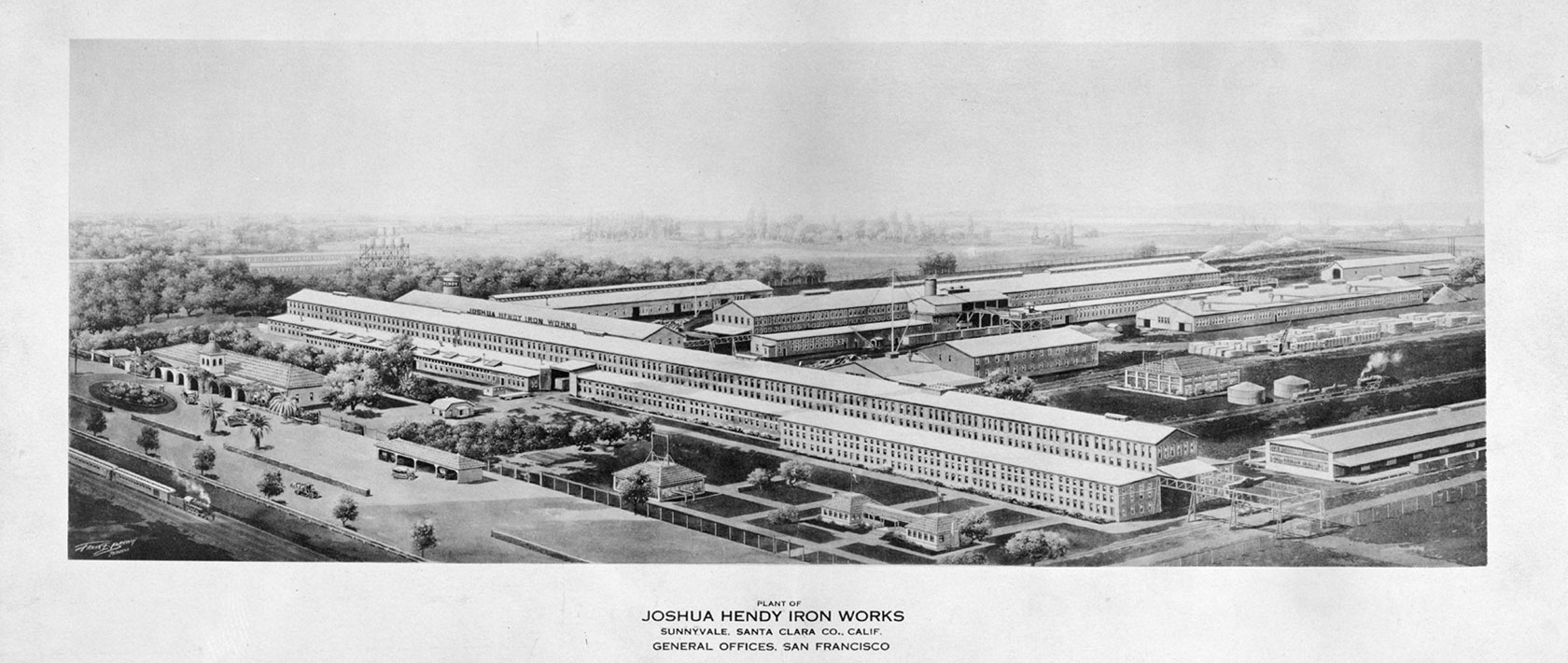
It stayed "Hendy" until 1947, when Westinghouse Electric Corporation bought out the plant in Sunnyvale. Westinghouse expanded products into electrical generation and transmission for industrial and residential growth in the west, military equipment, wind tunnels, radio telescope mounts, printing and binding equipment, papermaking equipment, fruit packaging machines and a large variety of other products, while spinning off the mining equipment into a separate business. Post WW II, under Westinghouse, the Sunnyvale plant became a major supplier to the U.S. Navy including ship propulsion turbines, gearing, electrical generation and missile launching systems for both surface ships and submarines. Starting in 1955, it was responsible for developing the “cold launch” technology for the underwater launch of Polaris intercontinental ballistic missiles which became the basis for the development of the launch technology used for the follow on programs named Poseidon, Trident, Peacekeeper, Capsule Launch System for Cruise Missiles and more recently Trident Submarine launched Tomahawk missiles. These systems, all developed by Sunnyvale, are part of the backbone of the U.S. defense system from the late 1950’s, all the way through today.
In 1996 Northrop Grumman Corporation procured Westinghouse and it remains Northrop Grumman to this day. Northrop Grumman continued the development of more sophisticated ship propulsion and turbine-electrical generator sets for the Nuclear Navy and has maintained its support for the underwater launch technology. In addition, the Sunnyvale plant was recently selected for design and manufacturing responsibility for electrical generation, propulsion and an upgraded missile launch system for the new Columbia Class submarines, the next generation of Fleet Ballistic Missile Program, now known as the Strategic Weapons System. The Strategic Weapon System is still managed by the U.S. Navy at the Strategic Systems Programs Office in Washington, DC.
The plant is exclusively a defense contractor now but has done a broad mix of commercial work over its existence with many examples still found around California. The business that Joshua Hendy started in 1856, is still going strong today, over 165 years later, and still in Sunnyvale, California.
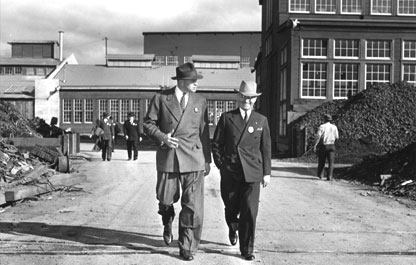 A visit by then-Senator Harry Truman touring with President Moore.
A visit by then-Senator Harry Truman touring with President Moore.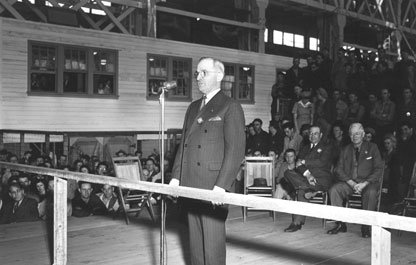 Senator Harry Truman making a speech to employees.
Senator Harry Truman making a speech to employees.
One interesting fact is that the Hendy Iron Works in 1906 was the first large scale, non-agricultural manufacturer to come to Santa Clara County. We believe the company sowed the seeds for the post-agricultural growth of “Silicon Valley”.
The Iron Man Museum, located in the Sunnyvale plant, operates as a small industrial museum that was started in the early 1980's and has continued to grow since that time. We have several books and plenty of historical information and artifacts that have been collected over time, including a very large product drawing collection. We continue to do research, write and support books and reconstructions of the machinery that Hendy sent all over the world from its San Francisco and Sunnyvale plants.
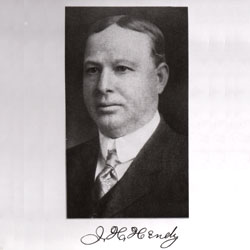 John H. Hendy portrait.
John H. Hendy portrait. 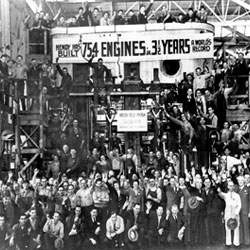 A WWII Liberty Ship Engine production milestone.
A WWII Liberty Ship Engine production milestone.